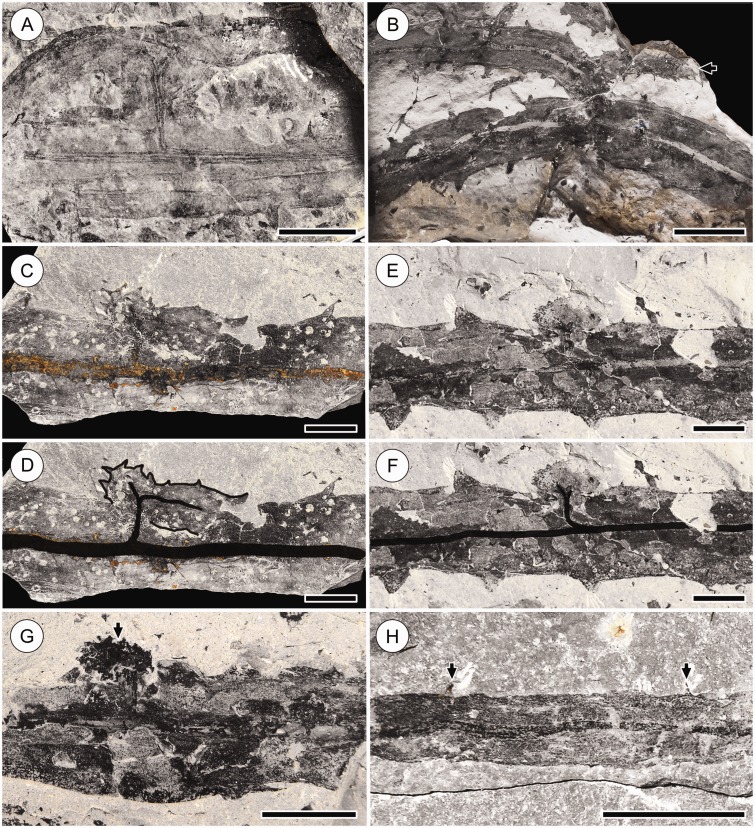Fig. 7.
Different degrees of development of K-branches of the Cottonwood Canyon lycophyte. (A) Fully developed K-branch. Note the thick vascular trace diverging from the stele of main stem at 90° angle. Scale bar = 10 mm. KU D1039a. (B) Fully developed K-branch producing a leafy stem and root-bearing axis (arrow). Note the smaller size and reduced leaves of the root-bearing axis; no roots are present on this segment of the axis. Scale bar = 20 mm. FMNH PP15959. (C, D) K-branch consisting of one fully developed arm and a leafy bud; in (D) parts of the specimen are traced for clarity. Note vascularization of the bud and fully developed arm. Scale bar = 10 mm. KU D932b. (E, F) Leafy bud; in (F) the vasculature is traced for clarity. Note the wide, squat shape of the bud and bifurcation of its vascular strand, indicating presence of two adjacent apices. Scale bar = 10 mm. KU D1471b. (G) Leafy bud exhibiting characteristic wide, squat shape and a slight central furrow (arrow) indicating presence of two adjacent apices. Scale bar = 10 mm. DMNH 29591. (H) Root-bearing axis with reduced leaves (arrows). Basal segments of root-bearing axes bear reduced leaves, as seen in (B) and Fig. 3A. Scale bar = 10 mm. KU D1281a.

